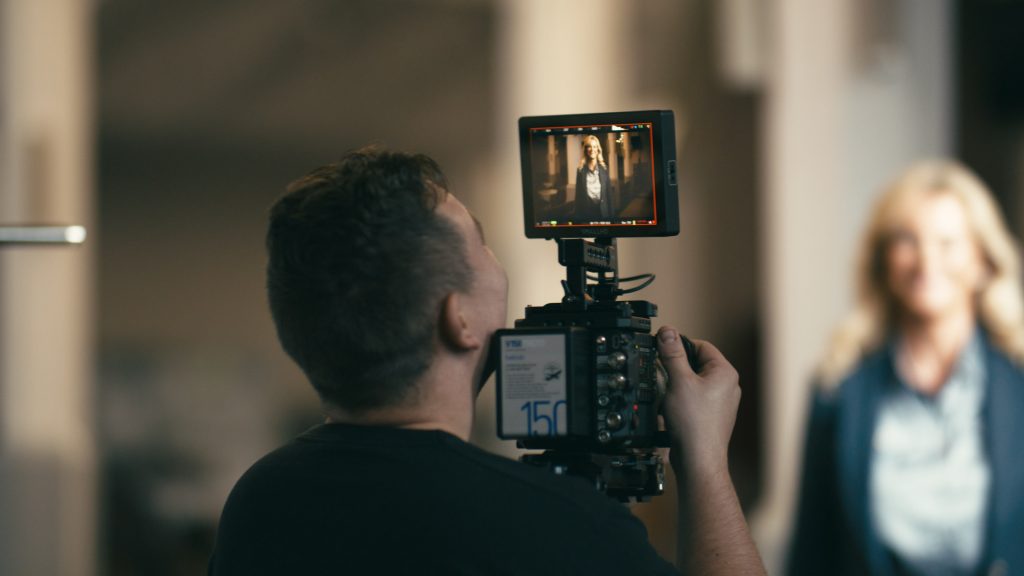The importance of training videos, in a world where so many professional skills are taught visually and remotely, cannot be overstated. A training video is an incredibly good way to provide not only engaging, but more efficient ways of giving lots of new information to a workforce, old or new.
Using videos for training not only provides uniform, across the board, training – but that they can revisit the training at any given time when they may need to.
Understanding how people learn from videos is crucial to leveraging this tool effectively. Research suggests that the retention rate for visual information can be significantly higher than that of text-based information. Research from Social Science Research Network highlights that 65% of people are visual learners, which underscores just how much of an impact video training can have as part of a company’s learning resources.
Whenever crafting training videos, it’s essential to make sure that you tailor content that captures attention but also fosters a more immersive learning experience. As we venture into 2024, the blend of traditional video training content with interactive elements and technologies like augmented reality (AR), it offers an unprecedented opportunity to create training modules that are not just informative but also genuinely engaging and memorable.
The Pivotal Benefits Of Making Training Videos
Training videos aren’t just a one off project that you invest in. Often they can be used multiple times whenever you hire or promote people within the business to better explain their new roles and responsibilities. And this is just one of the many benefits that training videos carry, there are many more which stand as the reason for businesses to be investing so heavily in visual resources as a way of training and upskilling their teams.
 Better Retention of Information
Better Retention of Information
As we somewhat already touched upon, video training resources provide a much more effective way for businesses to ensure the information that employees retain during training, learning and development is increased. Visual and auditory stimuli combined in video format cater to a wide range of learning styles, making complex concepts more accessible and easier to understand. Following on from this, interactive training videos, which may include quizzes or interactive scenarios, further solidify this knowledge by engaging learners in active participation rather than just passive consumption.
Higher Engagement
How many times have you started a job, been confronted with a stack of introductory papers, and simply glanced at them, then signed at the bottom to get it all over with? Test-based learning often facilitates exactly this result! However, unlike traditional text-based manuals or lectures, videos can convey the same information in a dynamic and appealing way. The use of visuals, animations, and even humour can transform mundane topics into interesting and engaging learning experiences for new starters or even for staff that are refreshing their own knowledge.
Reduced Training Costs
It might not seem logical that commissioning a high-quality training video is more cost effective than the old-school text based materials. But the larger cost of a professionally produced video is quickly offset by the reduction in ongoing training expenses. Traditional in-person training sessions often involve logistical costs such as travel, venue rentals, and printed materials, not to mention the time taken away from productive work. Training videos, on the other hand, are accessible on-demand – allowing employees to learn at their own pace and schedule.
How To Make Training Videos
It’s quite clear just how beneficial training videos are for companies. But, how do companies with no prior experience in video production create high-quality training videos to use in their organisation?
One practical approach to creating training videos is converting existing slide decks into more dynamic video content. Taking the knowledge that’s already been identified as crucial for employees and simply re-presenting it in video format is going to be the quickest way to get a plan together. Adding elements like voiceovers, animations, and interactive elements, companies can transform static slides into the kind of learning experience which keeps staff engaged and interested in their learning.
Creating a training video which has a lasting impact is also going to require you to think outside the box and tailor the content wherever possible. Videos should be designed with the end-user in mind, considering their knowledge level, roles, and learning objectives. Incorporating scenarios that employees can relate to, using language that resonates with them, and focusing on practical applications of concepts can significantly enhance how well they receive it.
When the goal is to produce training videos that stand out for their clarity, engagement, and effectiveness, partnering with a video production agency is probably the only reliable option for businesses that don’t have the ability, equipment or experience.
An outside video production partner can help with every step of creating a training video. From the concept and script, to pre-production, to filming and editing, all the way to the finished product.
When businesses employ outside agencies to manage the production of their in-house training videos, it provides the extra layers of creative talent, technical expertise, and professional execution. In short, this approach not only elevates the quality of training materials but also ensures that the videos are engaging, informative, and perfectly aligned with the specific training and development objectives of the business.
 Common Mistakes To Avoid When Making Training Videos
Common Mistakes To Avoid When Making Training Videos
As a video production agency that has worked on producing training videos for companies in many different industries, we know how to make great training videos. But, we’ve also seen what happens when other less qualified production companies try this, and when businesses themselves try to do it themselves – often leading to the same common mistakes.
Overloading Information
One of the most frequent missteps in training video production is attempting to cover too much ground in a single session. It’s understandable that companies want to maximise the value of their training videos by including as much relevant information as possible. However, cramming too much content into one video can quite easily overwhelm viewers and cause them to quickly lose attention in learning that could well be crucial to their success.
To avoid this, focus on creating concise, targeted videos that cover specific topics or skills. It may mean that what started out as a concept for one training video actually needs to be broken down into more, shorter and easy to digest training videos instead.
Forgetting The Audience
Another common oversight is failing to tailor the video content to the audience’s knowledge level, roles, or learning objectives. Usually, it’s going to be the upper or senior managers that help conceptualise the training videos, but they approach the teaching in a way that is going to suit people with perhaps less knowledge on the topic than them. Videos that are too technical, too basic, or irrelevant to the viewer’s role can lead to disengagement and a lack of interest in the training material.
There is a quick and easy way to mitigate against this happening. Simply involve people from the training video’s target audience in the planning stage. Gathering their input on the content, format, and delivery can provide the kind of insight which would otherwise be overlooked.
Lengthy Videos
Finally, the tendency to produce overly long training videos as a way of trying to include everything often makes them much less effective as a learning resource. The working environment for most, is often fast-paced, and employees therefore often find it challenging to dedicate extended periods to training sessions. Long videos can lead to fatigue, distraction, and a decrease in information retention.
The key to maintaining engagement is to keep videos short, ideally under 10 minutes. For more complex topics that require longer explanations, just as we mentioned before, try to split the content into a series of shorter videos. This way, employees can take breaks between sessions and are much more likely to process information in the right way.
Which Qualities Make A Great Training Video?
Aside from avoiding the common mistakes we’ve detailed already, there are some key features that businesses should be looking to include in training videos in order to amplify their effectiveness.
Easy to Understand
Not too of a concept difficult to grasp, but great training videos are obviously clear and easy to understand. Breaking down complex concepts into simple and digestible pieces that can be easily grasped by the audience makes the whole learning process much more accessible and much less intimidating.
Logical Structure
A well-structured training video guides the learner through the content in a coherent, step-by-step manner. The most common structure to training videos tends to be that it starts with an introduction that outlines the objectives, follows with a body that presents the information in a logical sequence, and concludes with a summary or call to action.
Memorable
To be effective, training videos must be memorable. This doesn’t just mean being entertaining; it’s about creating content that sticks in the learner’s mind long after they’ve watched the video. Techniques such as storytelling, using relatable examples, and incorporating memorable visuals or catchy phrases can make the content more engaging and easier to recall.
Focused on Learning Outcomes
Learning outcomes for each training video need to be agreed upon before producing it. This is because great training videos ensure that every element of the video, from the script to the visuals, is aligned with the goal of achieving these outcomes. Keeping a focus on what learners need to understand, do, or feel after watching the video ensures that the people creating it can make content that’s as impactful as possible.
3 Different Types Of Training Videos
Because it’s often the case that a business won’t just have one training video, but many, it’s important to have some diversity in the types of video formats which cater to different learning styles.
 Presenter-Style Training Videos
Presenter-Style Training Videos
Presenter-style videos feature an individual, typically a subject matter expert or a charismatic speaker, who leads the viewer through the training content. This is quite a common format and essentially it simply replicates a traditional classroom lecture. Although, a good way to make this format a little more engaging and personal would be to have the presenter address the camera directly, this in turn makes viewers feel as though they are being spoken to individually, which helps in building a connection and facilitating the learning process.
Best used for: Introducing new concepts, company policies, or soft skills training where the presence of a human element adds value and authenticity.
Screencast Videos
Screencast videos capture the content directly from a computer screen and are often accompanied by voice-over narration. Think of the kind of tutorials you see made by YouTube creators on how to do various things on PCs or software. Evidently, screencasts are ideal for showing things like step-by-step tutorials, how-to guides, or software feature explanations, making complex tasks easier to follow and understand.
Best for: Technical training, software demonstrations, and providing visual walkthroughs of digital products or services.
Tutorial Videos
Tutorial videos are instructional videos that take the viewer through a process or teach a specific skill in a detailed, step-by-step manner. These videos can combine elements of presenter-style and screencast videos, utilising voice-overs, on-screen text, and visuals to guide the learner. Tutorial videos are highly versatile and can be adapted to a wide range of topics, from practical skills like equipment operation to more abstract concepts like problem-solving techniques.
Best for: Teaching practical skills, procedural training, and detailed explanations of complex topics.
Incorporating a mix of these video formats into a training strategy is going to be one of the best ways for you to keep content fresh and make sure that you maintain the engagement of viewers over any extended periods of time.
Make Training Videos The Right Way With Astor’s Help
At Astor Film Productions, we understand what great corporate training videos look like, and how to make sure that they resonate with employees and drive learning outcomes. Our team of experts combines creative talent with state-of-the-art technology to produce training videos that are not just educational but also captivating and effective.
So, if you’ve been reading this with all the intention of creating training videos for your business, then don’t let the opportunity of having great visual resources for your staff be missed. Choose Astor as your partner in crafting training content that works. Contact us today to start transforming your training initiatives and unlocking the full potential of your workforce.

 Better Retention of Information
Better Retention of Information Common Mistakes To Avoid When Making Training Videos
Common Mistakes To Avoid When Making Training Videos Presenter-Style Training Videos
Presenter-Style Training Videos